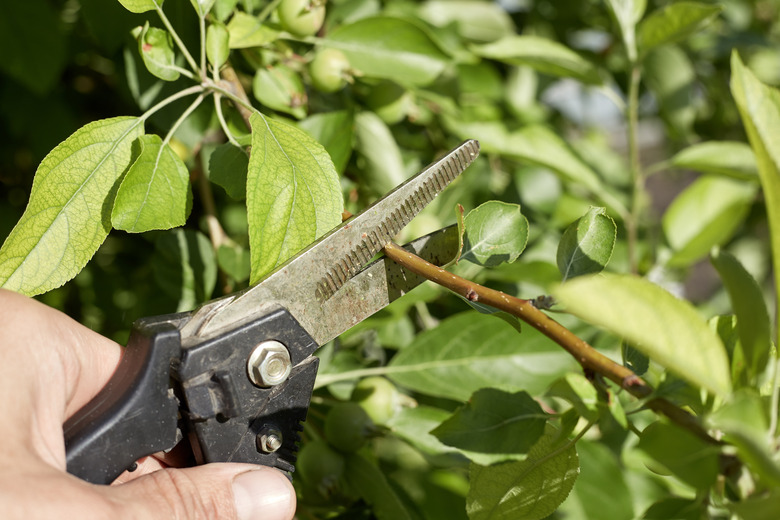How To Plant Apple Tree Cuttings
Growing fruit trees is incredibly rewarding. There is nothing like plucking sweet, organic apples, pears, cherries, or apricots right off the tree. But it can be expensive too. A young sapling at the garden store can cost a pretty penny, and if you'd like a half dozen young apple trees, you'll end up spending quite a bit.
An alternative is available: growing apple trees asexually through cuttings. Apple trees may be grown from branch cuttings if the right cutting is used and the plant is given the proper care. If you have a tree or have a friend with a tree, propagating new trees can be free.
Asexual Propagation From Cuttings
There are two kinds of plant propagation: sexual and asexual. Sexual propagation involves male pollen fertilizing the female egg and creating a third individual with gametes from both the male and female. Asexual propagation is vegetative and does not involve the union of the male and female gametes.
Apple trees can be reproduced from seeds, but the new plants will not necessarily be identical to the known parent from which the seed was taken. The most commonly used methods commercially are asexual: grafting and budding. These are said to be more successful than getting a cutting to root.
However, it is not impossible to grow an apple tree from a cutting. And it costs you little to try it so if you feel like it, give it a try. A cutting is a piece of vegetative tissue, like a stem, that, given suitable conditions, will regenerate the missing parts and produce a self-sustaining plant. When it comes to propagating apple trees from cuttings, branch cuttings with buds are "planted" and encouraged to root.
Taking Apple Tree Cuttings
To create a new apple tree from a cutting, take cuttings in late spring. Select an apple tree branch tip that contains a number of nodes where leaves branch off as well as a bud on the tip of the branch. Take two or three 6- to 8-inch cuttings for every tree you wish to produce. Not every cutting will root.
Trim off all leaves and buds that are on the bottom 3 inches of each cutting. This part of the cutting will be below the soil. Leave all buds on the upper section of the cuttings. Remove all but one or two leaves. Dip the cut end of each cutting into a small dish of rooting compound. This will encourage the cuttings to sprout roots.
Insert the bottom 3 inches of each cutting into a small plant pot filled with moist peat soil. Peat soil drains well and is light enough not to interfere with root growth. Place the pots in a warm spot where they will receive partial or dappled sunlight. Keep the soil moist.
Transplanting Apple Tree Cuttings
Not every one of the cuttings will thrive, but it's possible that some will. Check their progress every few days. If a cutting's leaves die and no new growth occurs, that cutting is probably dead. If new growth develops and there is some resistance when you pull up lightly on the cutting, that cutting is doing well.
After four to six weeks in the small pots, transplant all cuttings that have rooted into a larger pot. Come spring, transplant the cuttings into the apple orchard after working the soil well. Be sure to site them in a location that has well-drained soil and gets plenty of sun.
